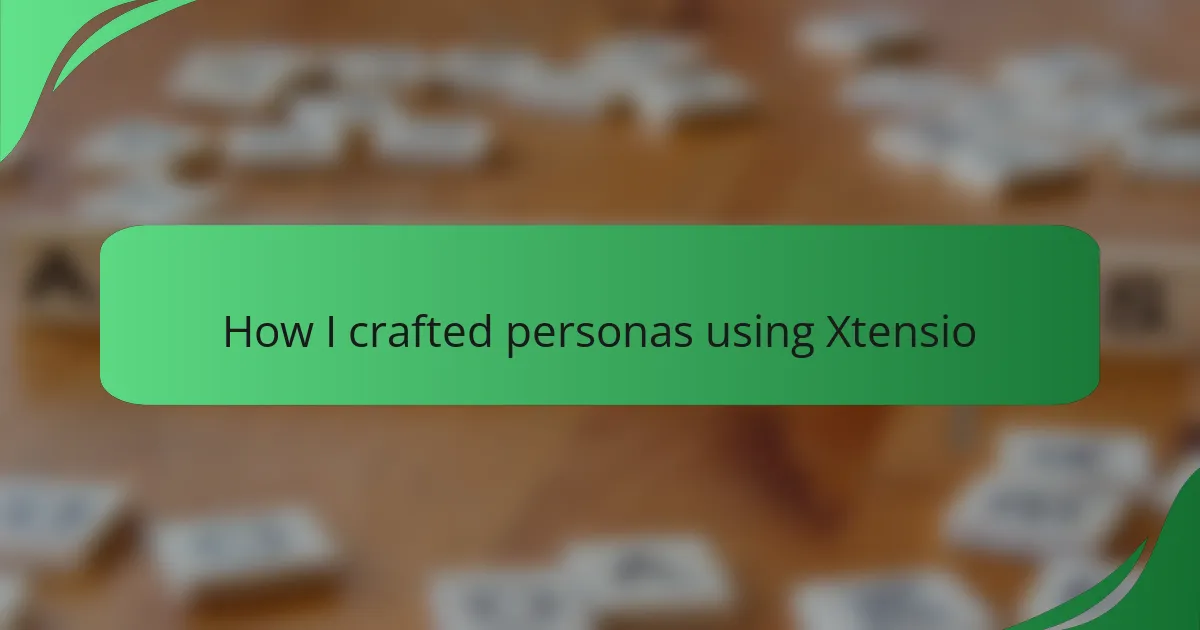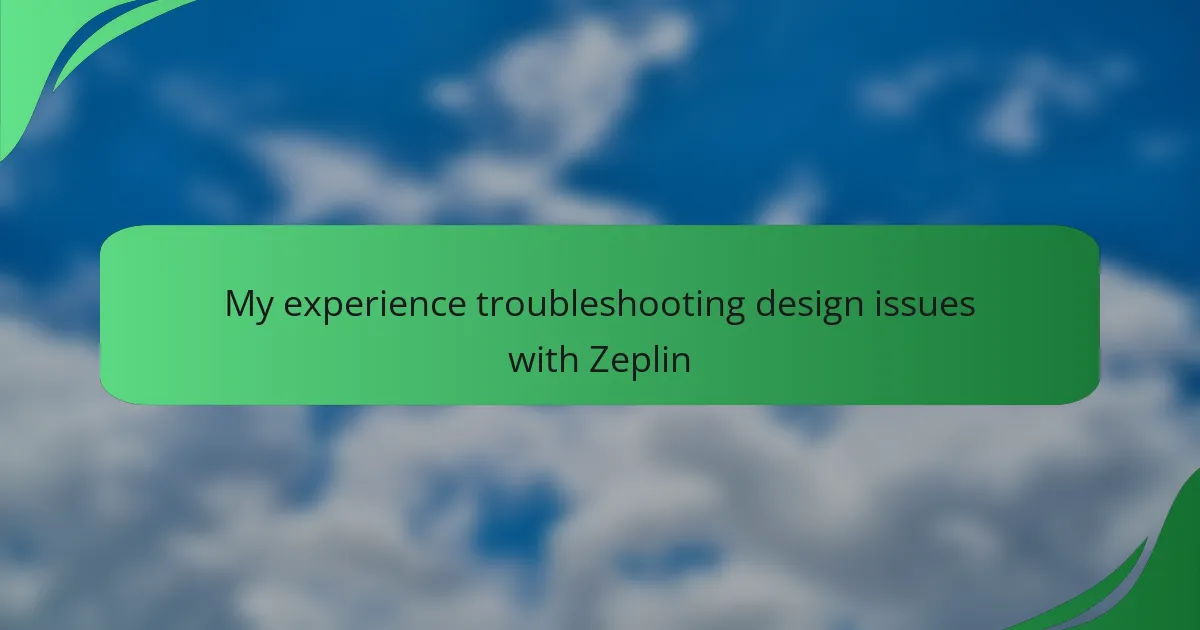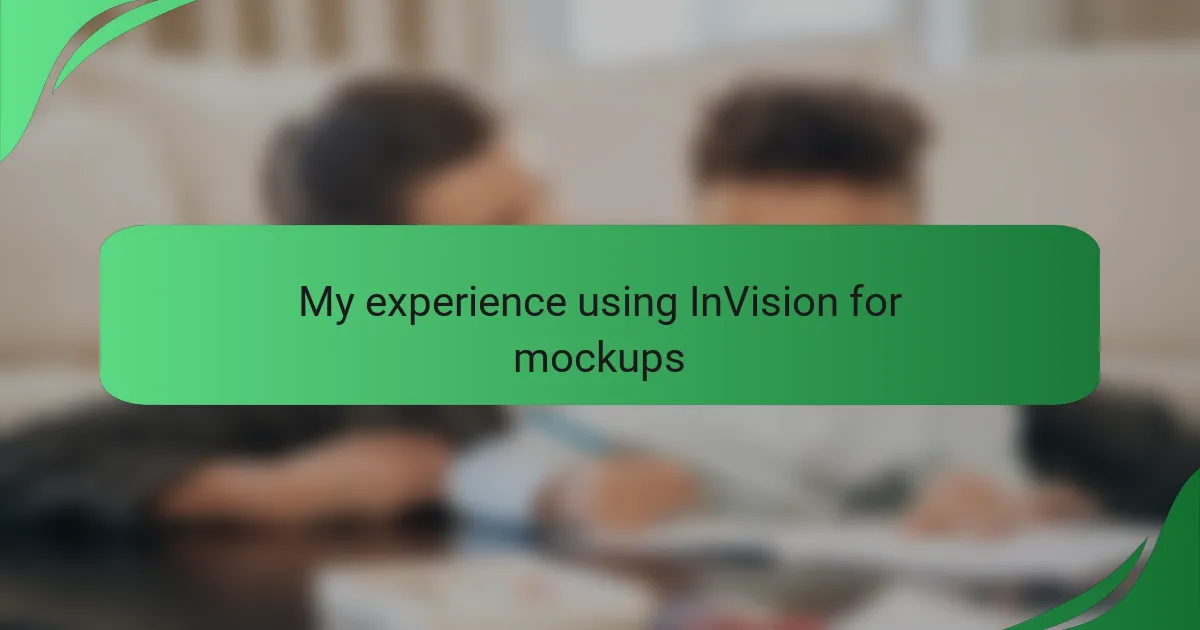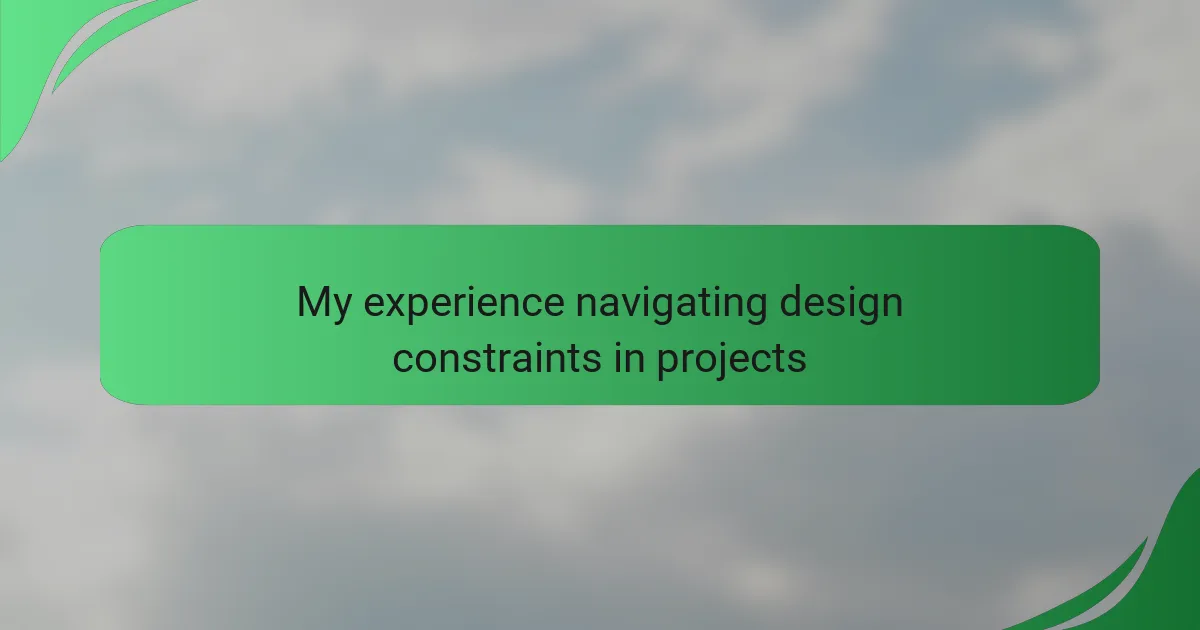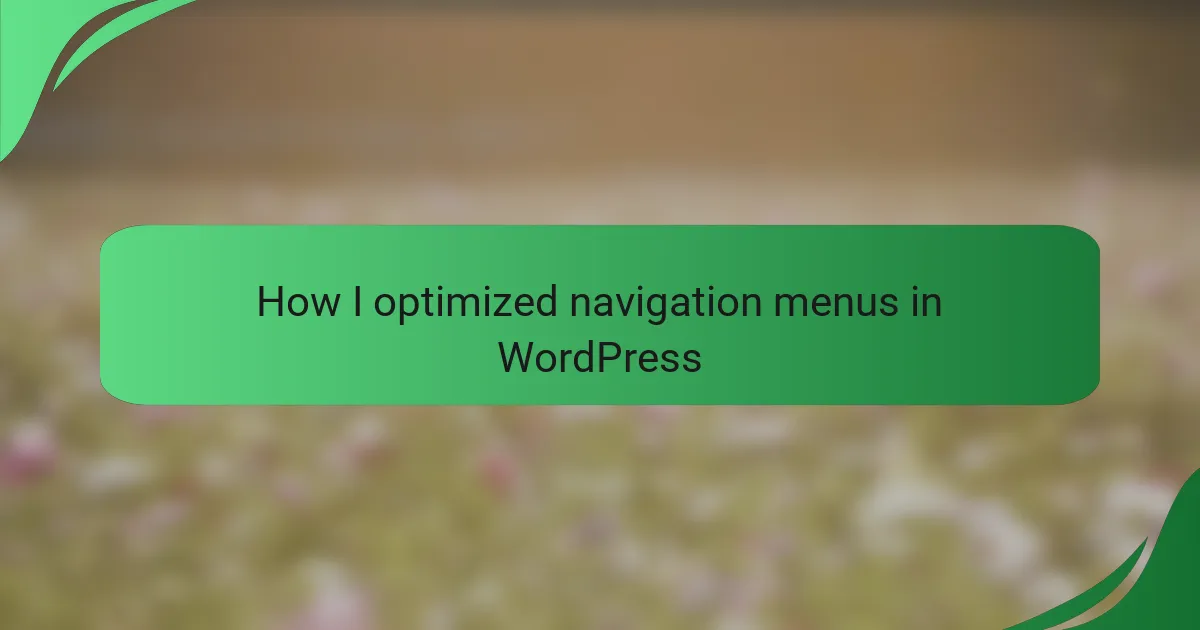Key takeaways
- Effective interface interaction design focuses on user engagement and emotional responses, simplifying complexity for intuitive experiences.
- User personas transform demographics into relatable characters, enhancing empathy and collaboration among design teams.
- Using tools like Xtensio streamlines persona creation with features such as collaborative editing and customizable templates, improving design quality.
- Best practices for persona crafting include using real data, engaging with users, and regularly updating personas to reflect evolving needs.
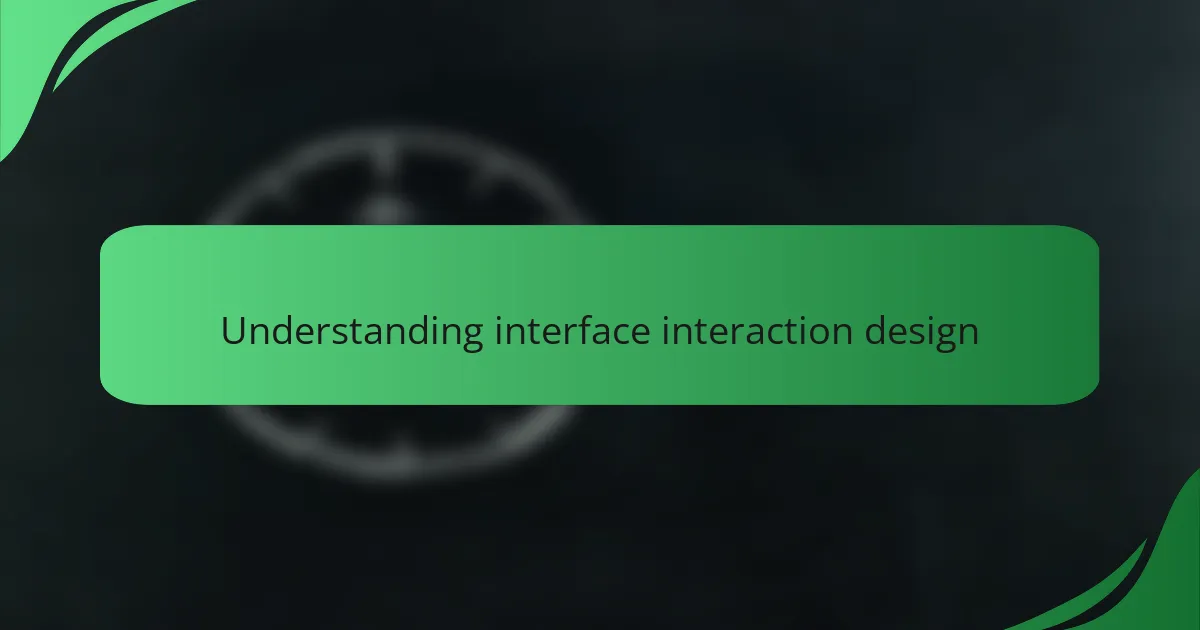
Understanding interface interaction design
Interface interaction design is more than just creating visually appealing layouts; it’s about understanding how users engage with those designs. I fondly remember my early days in this field, where I learned through trial and error that every click, swipe, and hover has a purpose. It connects users to the content in meaningful ways, and when done right, it creates an intuitive experience that feels natural.
Have you ever found yourself frustrated by a confusing interface? I sure have, and that frustration sparked my passion for crafting designs that are user-centric. The emotional reaction users have towards a design can make or break their overall experience. It’s essential to consider not just aesthetics but also how a user feels when interacting with the interface.
Ultimately, effective interaction design simplifies complexity. I’ve seen firsthand how thoughtful design can transform an overwhelming process into a seamless journey. By diving deep into user needs, designers can create interfaces that resonate on a deeper level, allowing for more engaging and fulfilling interactions.
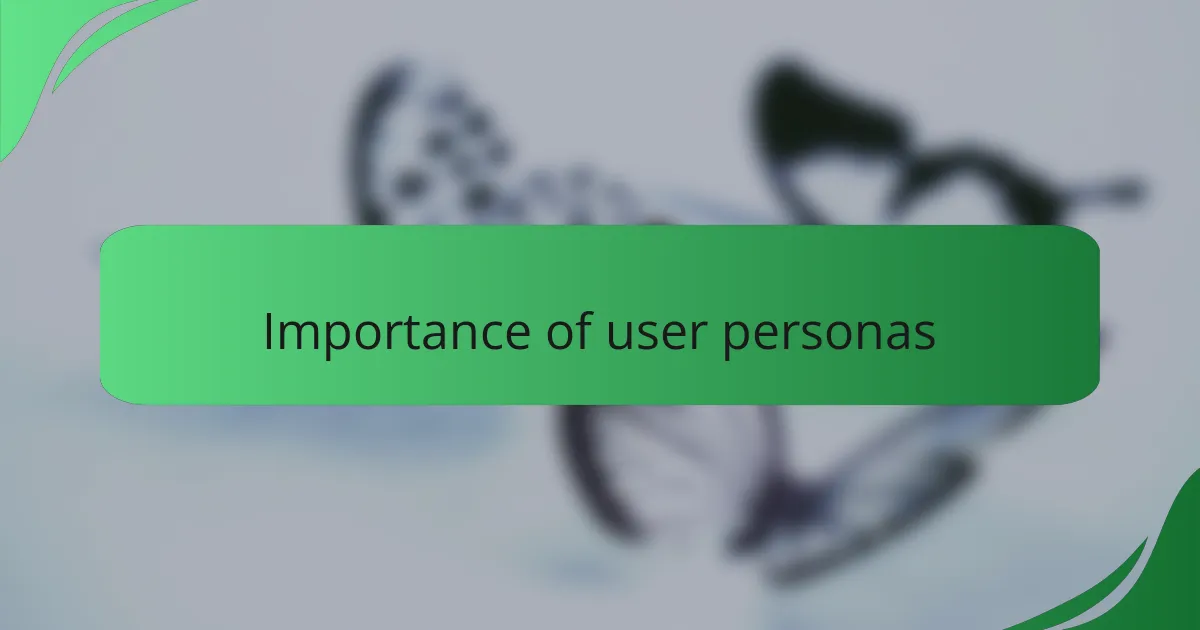
Importance of user personas
User personas are vital for understanding your audience on a deeper level. They transform abstract demographics into relatable characters that inform design decisions. I remember the first time I crafted a persona; it was eye-opening to see my users not just as data points but as individuals with specific needs and desires.
Creating these personas helps in aligning design choices with user expectations, ensuring a more intuitive interface. When I shared these personas with my team, I noticed an increase in empathy and collaboration during our design process. It truly highlighted the importance of designing for real people, not just hypothetical users.
Here’s a comparison table to illustrate the impact of user personas versus traditional user research methods:
| Aspect | User Personas | Traditional User Research |
|---|---|---|
| Focus | Individual user needs | General trends and statistics |
| Empathy | High | Moderate |
| Design Direction | Guides specific features | Informs overall strategies |
| Collaboration | Encourages team alignment | Often siloed insights |

Overview of Xtensio features
Xtensio offers a dynamic range of features that streamline the process of creating detailed personas for any project. I remember when I first discovered Xtensio; the user-friendly interface and visually appealing templates captivated me right away. It allowed me to easily piece together various elements of my personas, saving me invaluable time and effort.
One standout feature is the collaborative editing capability. This really resonated with me during a team project; my colleagues and I could simultaneously contribute insights and feedback, enhancing the overall quality of our personas. Other notable features include:
- Intuitive drag-and-drop functionality for easy customization.
- A library of templates designed specifically for marketing, business, and customer personas.
- Real-time collaboration tools to facilitate teamwork and obtain instant input.
- Export options to present personas in formats like PDF, which is perfect for sharing with stakeholders.
- Automatic saving of progress, allowing users to work at their own pace without worries of losing valuable information.
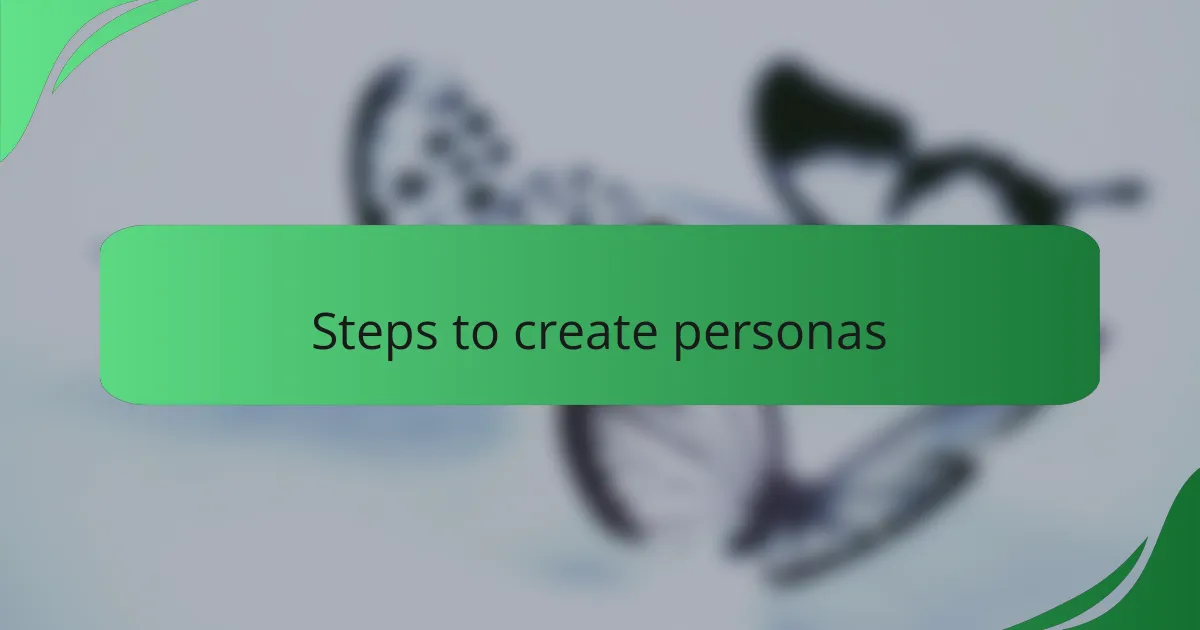
Steps to create personas
Creating personas using Xtensio can be an enriching experience. I remember the first time I crafted a persona; I felt like I was stepping into the shoes of my users, which transformed my approach to design. Here are the steps I found most useful.
First, you start by gathering relevant data, like demographics and user behaviors. Then, organize this information into structured templates provided by Xtensio. I’ve found that visualizing the persona with images and narratives makes it more relatable, and it taps into the emotional aspects of user engagement.
Lastly, continuously iterate your personas based on feedback and new insights. This is crucial, as user preferences often evolve, and keeping your personas updated ensures they remain relevant.
| Step | Description |
|---|---|
| Data Gathering | Collect user demographics and insights for accuracy. |
| Template Creation | Use Xtensio’s templates to structure the persona details. |
| Visual Elements | Add images and narratives for relatability. |
| Iteration | Update personas based on user feedback and changing needs. |

Best practices for persona crafting
When crafting personas, I’ve learned that specificity is crucial. Each persona should be detailed enough to evoke a clear image of the user, including their motivations, pain points, and preferences. I once worked on a project where the team sketched a generic persona, and it led to misunderstandings about user needs. This experience taught me the power of depth in persona development.
Engaging with real users through interviews or surveys can significantly enhance the authenticity of your personas. I remember conducting a few user interviews for a project; the stories shared were incredibly eye-opening. It’s not just about demographics; it’s about understanding experiences on a personal level.
Here are some best practices to consider when crafting your personas:
- Use real data collected from interviews or surveys to inform your personas.
- Include user goals, challenges, and motivations to create empathy.
- Create visual elements in Xtensio to help others connect with the personas more easily.
- Involve team members in the persona-crafting process for diverse perspectives.
- Regularly update personas as you gain new insights about your users.
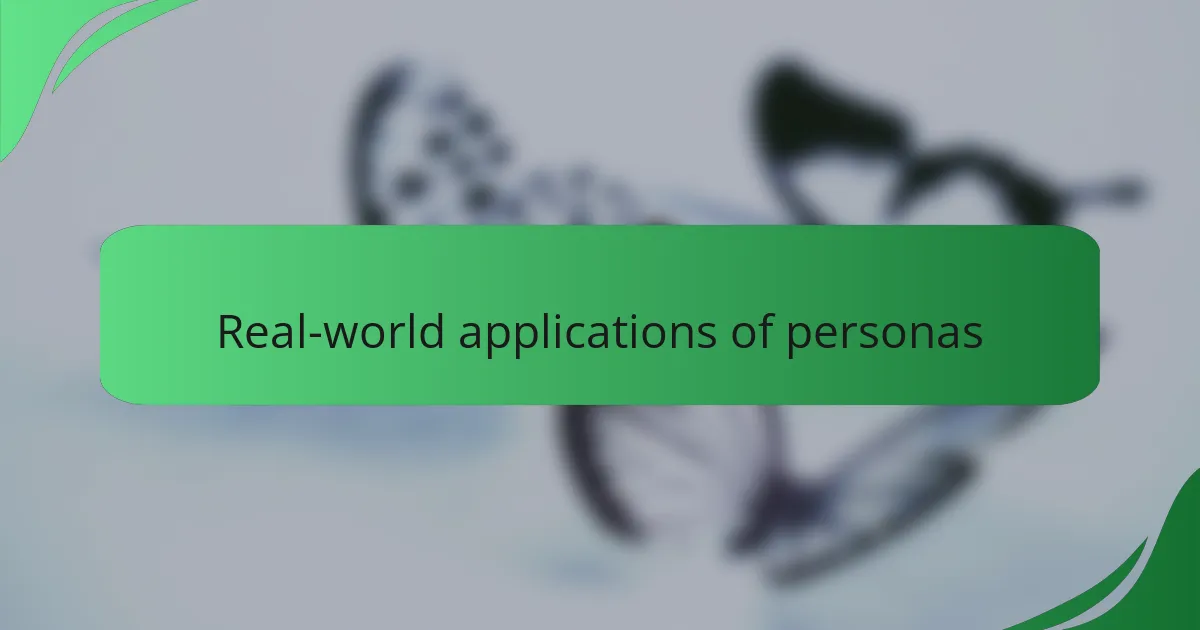
Real-world applications of personas
Personas have real-world applications that extend far beyond the design room. For instance, I’ve seen how companies integrate personas into their marketing strategies. By tailoring campaigns that resonate with the specific motivations and pain points of each persona, marketers can significantly enhance engagement. Isn’t it fascinating how understanding just a few key traits of your audience can reshape an entire advertising approach?
In another project, my team crafted a persona that represented our primary user base, and it became our guiding star. This persona influenced everything from product development to customer support strategies. It’s remarkable how having a ‘face’ behind the data can foster stronger empathy within teams. Have you ever noticed how presenting user stories can spark discussions that lead to innovative solutions?
Moreover, I’ve participated in workshops where personas were used as a focal point for brainstorming sessions. In these settings, teams would reference specific personas to evaluate design choices and functionality. This was an eye-opener for me; it reinforced how using personas as touchstones could streamline decision-making and ensure that the design remained rooted in real user needs. How have you leveraged personas in your collaborative efforts?
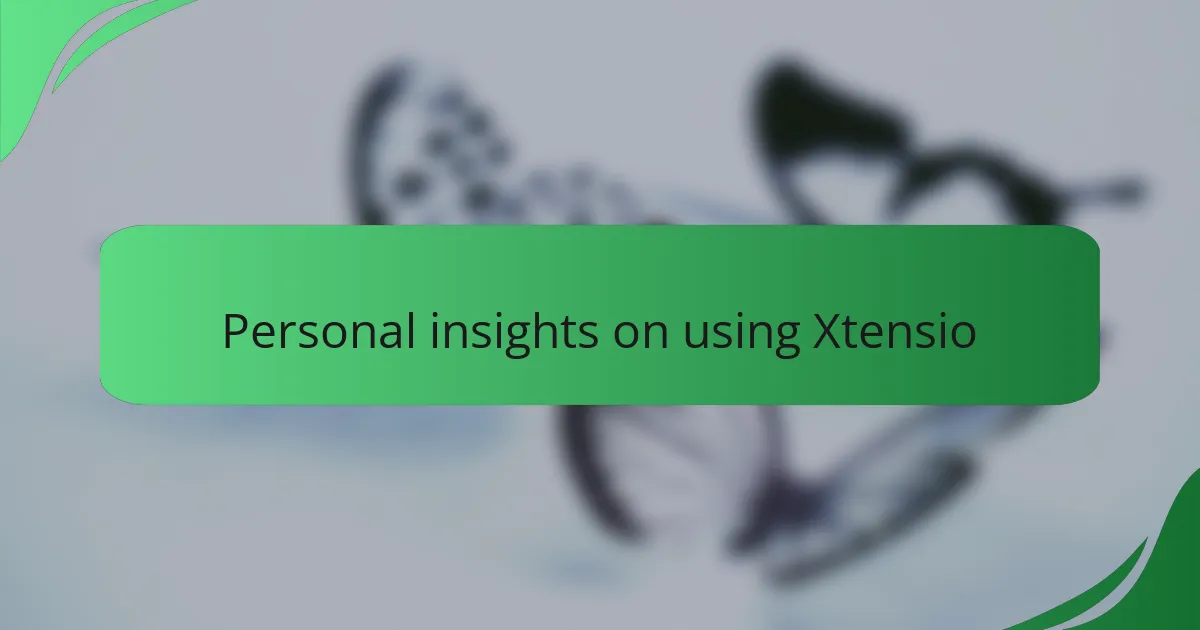
Personal insights on using Xtensio
Using Xtensio for persona crafting has been quite an enlightening journey for me. When I first started using the platform, I was impressed by how intuitive it felt. The drag-and-drop interface allowed me to bring my ideas to life quickly, which is a relief when you’re balancing multiple projects. Do you ever feel stuck trying to piece together your thoughts? Xtensio helped me overcome that hurdle by allowing me to visualize everything in one place.
One of the features I genuinely appreciated was the collaborative aspect. During a recent project, I invited my team to contribute in real-time. We could exchange ideas and build off each other’s insights seamlessly, which transformed my initial concepts into richer personas. I believe collaboration can often take a good idea to an exceptional level, don’t you? Xtensio made that possible.
While crafting personas, the visual elements offered by Xtensio resonate deeply with how we connect with information. I recall adding personal stories and images to my personas, which made them feel more real and relatable. This personal touch not only captured the essence of the users but also brought the team together in discussions about design directions. In my experience, the more real a persona feels, the more it can drive decisions that resonate with actual users.
